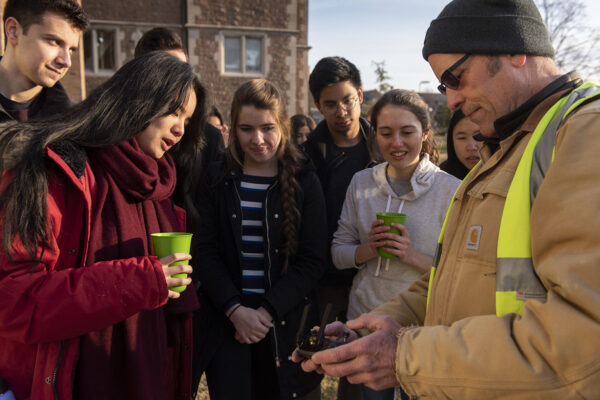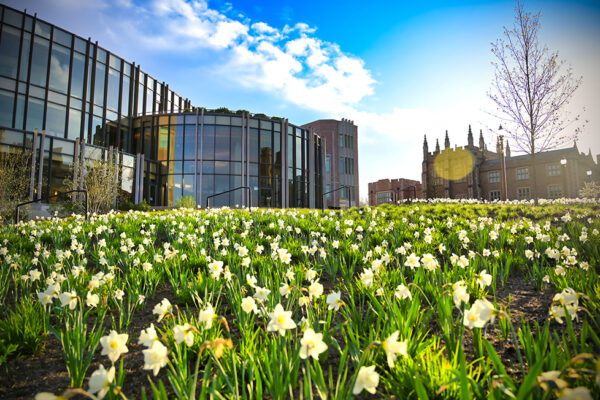Washington University in St. Louis aims to be a national leader in campus sustainability. It’s a core priority, and the university has heavily invested in reducing its carbon footprint, as well as promoting a broad range of more sustainable practices on campus. This commitment is further demonstrated by a new $3.5 million solar photovoltaic project on the Danforth, Medical and North campuses.

“Not only will this installation project make us one of the largest consumers of on-site solar energy in the St. Louis area, but it will also enhance our strong institutional commitment to making our campus more sustainable,” said Chancellor-Elect Andrew Martin. “This is a significant moment as we lean into our crucial responsibility to the environment and to our mission to prepare global citizens and improve lives in service of the greater good.”
The installations started in mid-March and will include six locations: the Athletic Complex, North Campus, Taylor Avenue Buildings One and Two, the Environmental Health and Safety Building and 4480 Clayton. The project is expected to be completed by the end of the fall. Once installed, the new solar arrays will add 1.9 megawatts of solar-generating capacity to university buildings, bringing the total figure to nearly 2.5 megawatts institutionwide.
 To put that into context:
To put that into context:
- 2.5 megawatts of solar in Missouri would meet the electricity needs of 394 average U.S.homes.
- It’s the emissions equivalent of taking 480 cars off the road, or swapping out more than 85,000 incandescent lights to LEDs.
- And when it comes to carbon sequestration, the emissions reduction associated with the new solar arrays is equal to the amount of carbon dioxide sequestered by 2,660 American forest acres.
As part of its sustainability strategic plan, the university is currently on track to reduce campus greenhouse gas emissions to 1990 levels by 2020, despite more than doubling in space over the same time period. This newest solar project will help achieve that important goal.
“This new project is ambitious and bold,” said Henry S. Webber, executive vice chancellor and chief administrative officer. “The clean, renewable power generated by these panels will help the university achieve its goal of further reducing carbon emissions, and continue to elevate important sustainability efforts on campus.”
The project has also provided a unique opportunity for students to gain firsthand exposure to the fast-growing solar industry. The Office of Sustainability partnered with the Environmental Studies Program and Azimuth Energy to develop a new interdisciplinary program, the Renewable Energy Student Engagement Team (RESET). Eighteen students from a range of disciplines have had the opportunity to learn about the business, policy and engineering aspects of the solar industry with the new solar project as a case study.
“The solar project is serving as a living classroom for students to learn about renewable energy and acquire skills and knowledge that will increase their competitiveness in the job market,” said Phil Valko, assistant vice chancellor for sustainability.
The project is being developed in partnership with Gardner Capital, Azimuth Energy and Aschinger Electric.
To take an interactive look at additional Washington University sustainability efforts, check out this online sustainability tour. It showcases 18 locations across campus related to green building, biodiverse landscapes, the circular economy, local food and more.



